TRURO — A rich confectionary scent wafts through the air in Chequessett Chocolate’s production room. It’s a perfume that can make ordinary visitors swoon. But co-founder Josiah Mayo is on a scientific tangent. “What you’re smelling is the gassing off and the aging of some sharp acetic acid that we want to start rounding out,” he says.
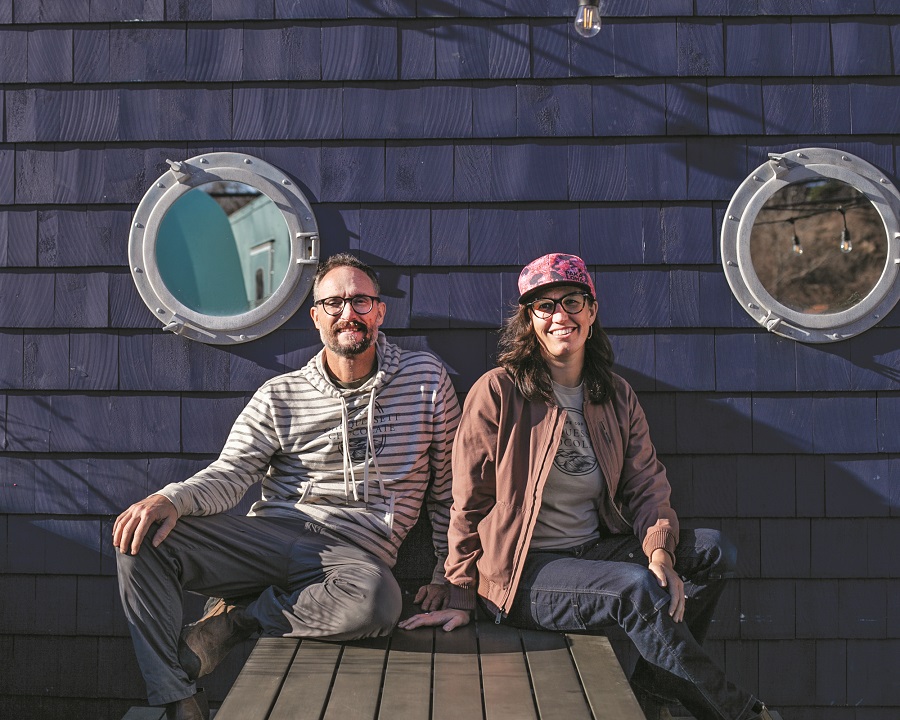
“The flavor of the beans is really intense and kind of rough, so a lot of our job is to bring out subtle, special flavors,” Mayo adds, speaking over the rhythmic hum of melangers — large stainless-steel mixers that continually churn velvety liquid chocolate. Each batch of chocolate spends three or four days here. Chocolate needs to mellow, “sort of the way you age wine or whiskey,” he says.
Mayo and co-founder Katherine Reed began their business of making and selling chocolate in 2014. The two had previously run the café at 141 Bradford Natural Market in Provincetown.
“Katie was on this plant-based, raw food trajectory,” says Mayo. “I was doing raw bar, seafood stuff. The whole boat-to-the-throat thing.”
Mayo continues to fish and is probably the world’s only chocolatier-commercial fisherman. (He achieved a moment of fame in 2021 as the captain of the lobster boat Michael Packard was diving from when Packard was briefly gulped into the mouth of a humpback whale.)
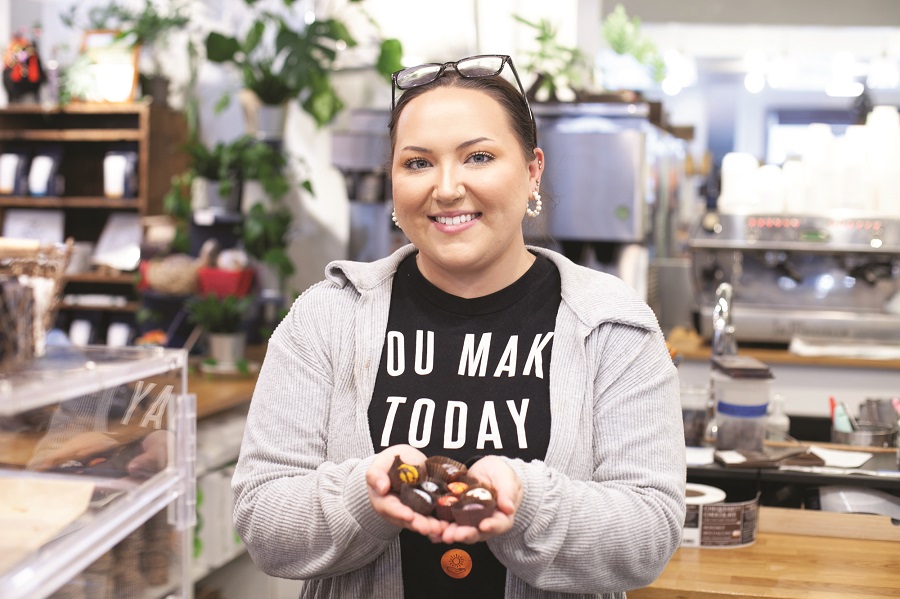
When Reed and Mayo left Bradford Natural Market they got interested in the emerging bean-to-bar movement. The partners, who were then a couple, set out on what Mayo calls a “walkabout” that took them to Costa Rica and gave them a closer look at the where craft chocolate making begins.
They knew craft specialty coffee had taken off and craft beer was growing. “We thought to ourselves, ‘There’ll be a little chocolate maker or a medium-sized chocolate maker doing craft chocolate in each city or each region,’ ” says Mayo.
Now their Truro shop is stocked with artfully wrapped chocolate bars produced by small companies around the world from Iceland to Hawaii. “Most of the craft chocolate makers are our friends,” says Reed. It’s a small, tight-knit industry.
Their own $9 chocolate bars are wrapped in blue paper with white lines snaking across the surface, depicting maps of the ocean floor. Reed, who previously worked for the National Park Service mapping sea-level rise, does all the design work herself. “It’s really my passion,” she says. “It’s the thing I’ve unwittingly connected with most in the business.”
From the start, the work has also involved learning ways a small producer in a small market can have the reach necessary to grow into a viable business.
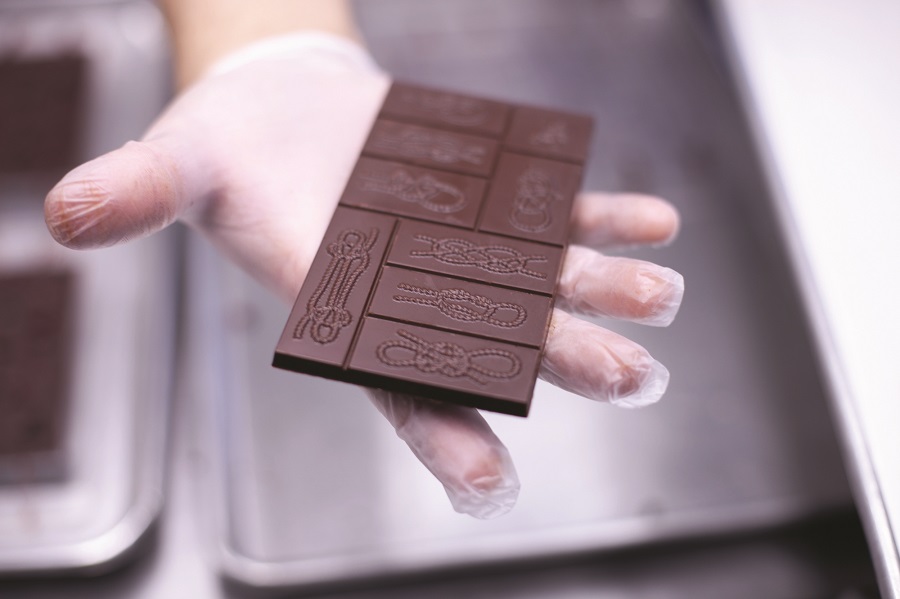
So far, so good. Reed and Mayo have placed their chocolates at retailers throughout the country, built a robust online presence, and garnered several awards and accolades. They now have 30 employees and four facilities in town, including their retail store and café in North Truro, production sites at Tradesman’s Park North and South, and a machine shop and office.
While they’ve kept the geographic heart of the company in Truro, they’ve built connections around the globe. Reed recently returned from a trip to Hawaii, where she was researching how the Manoa Chocolate Co. integrates education into its business. She wants to create a way for people to get an inside view of production here.
It probably helps that Reed and Mayo both have degrees in anthropology, a lens through which they view chocolate production, including all its historical baggage of exploitation.
“For a very long time, there was opacity between the consumer and the cacao producer,” says Reed. They have aimed for a socially conscious approach and want customers to know about their ingredients and the people who grow the cacao beans they use.
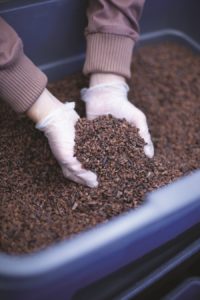
Back in the production room, Reed opens a large bin of the cacao nibs that go into their all-purpose dark chocolate. They’re from Öko Caribe in the Dominican Republic, a company they got to know through fellow craft chocolatiers at Taza in Somerville, where they bought their first beans.
After receiving the harvested and fermented beans, chocolate makers at Chequessett sort out imperfections, roast the beans, and then use a modified grain cracker to split the seeds from the cacao shells. After winnowing the split beans, they are left with the nibs, which contain cacao solids and cacao butter.
Three batches are underway at once. The 70-percent dark chocolate is made by mixing the nibs with 30 percent sugar. The ingredients quickly turn to liquid. A nearby melanger mixes milk chocolate with coffee; it’s made by adding powdered milk and coffee from George Howell Coffee in Acton. The third batch, which will become 600 Sconset Brown Butter Sage Bars, is made with caramelized butter and sage.
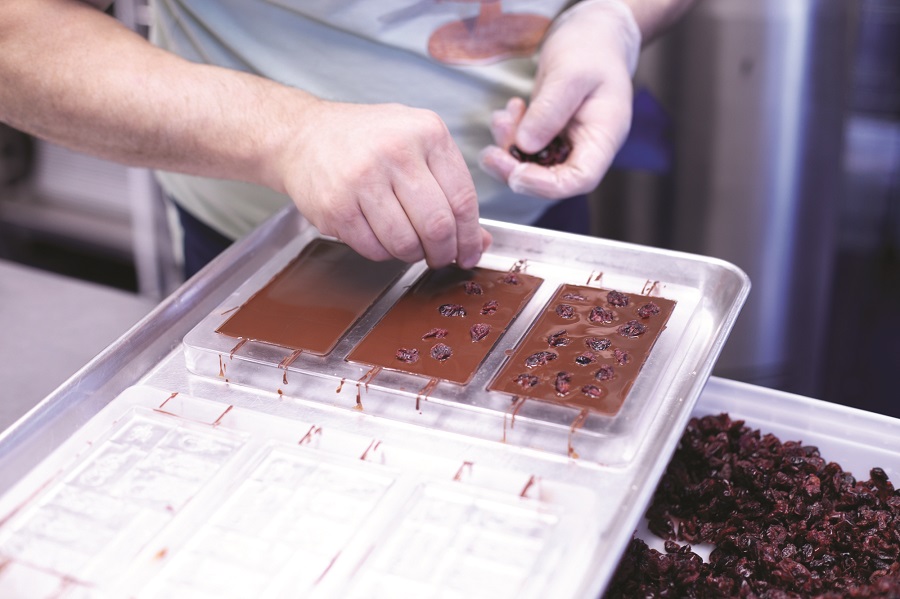
In the next room over, Ian MacBride is turning the liquid chocolate into bars. MacBride, who recently moved from California to take over Short ’n’ Sweet, his in-laws’ ice cream shop in Chatham, works making chocolate in the winter. He places plastic molds under nozzles that squirt out chocolate that has been through a tempering machine. The molds imprint a design of marine knots onto each bar’s surface. For this batch, he’s inserting dried cranberries into the chocolate to make Chequessett’s Chatham Cranberry Bar. The cranberries are sourced from a local third-generation cranberry grower, he says.
Each bar is simple, Mayo says, but at the same time foodways, the history of colonialism, and modern engineering all come into play.
MacBride pulls out a tray of chilled and hardened bars from the refrigerator. The surface, dark and glossy, is dotted with deep red cranberries on one side and delicate imprints of rope on the other.
“People eat with their eyes first,” says Reed. “It needs to be beautiful.”
